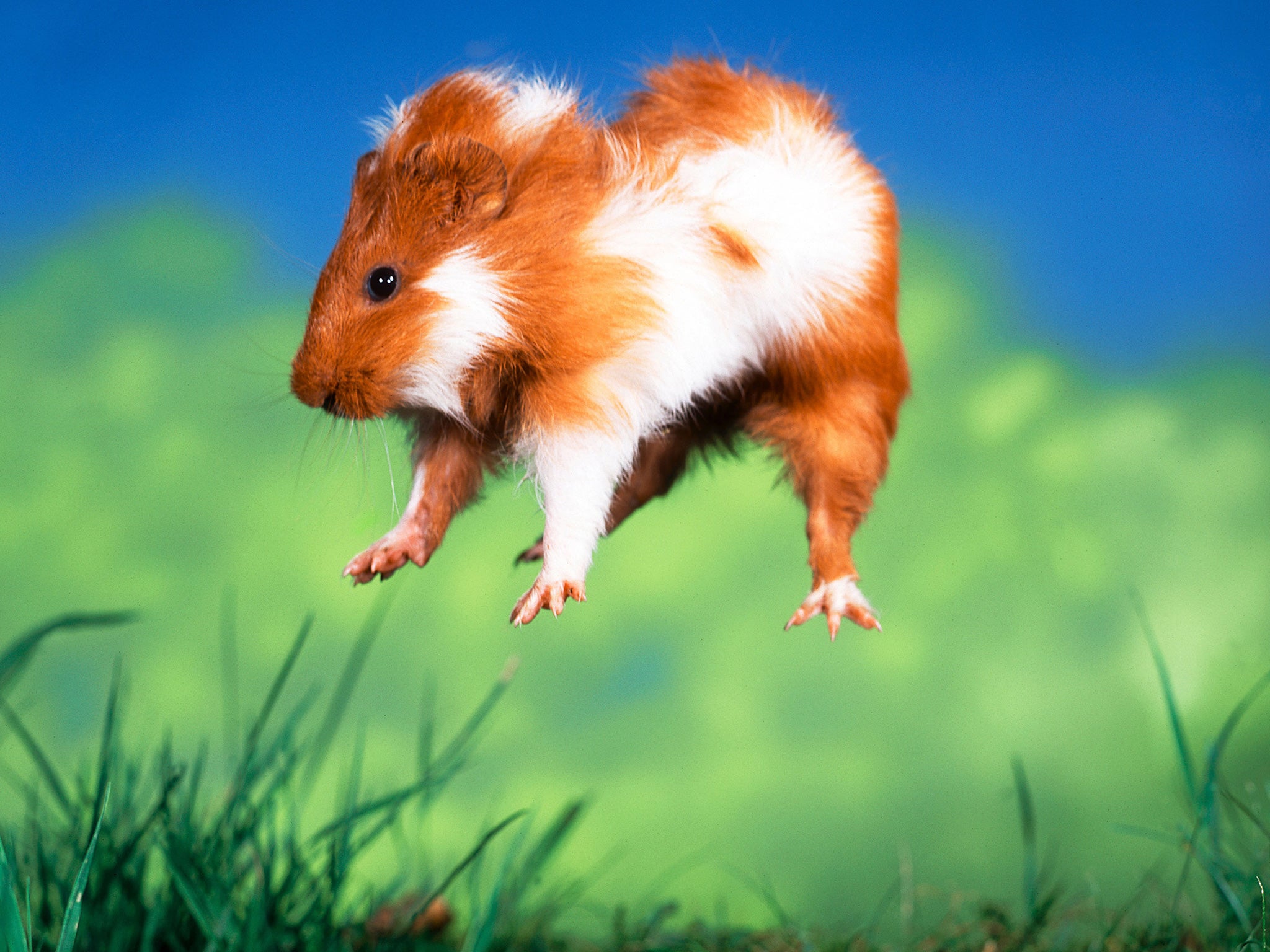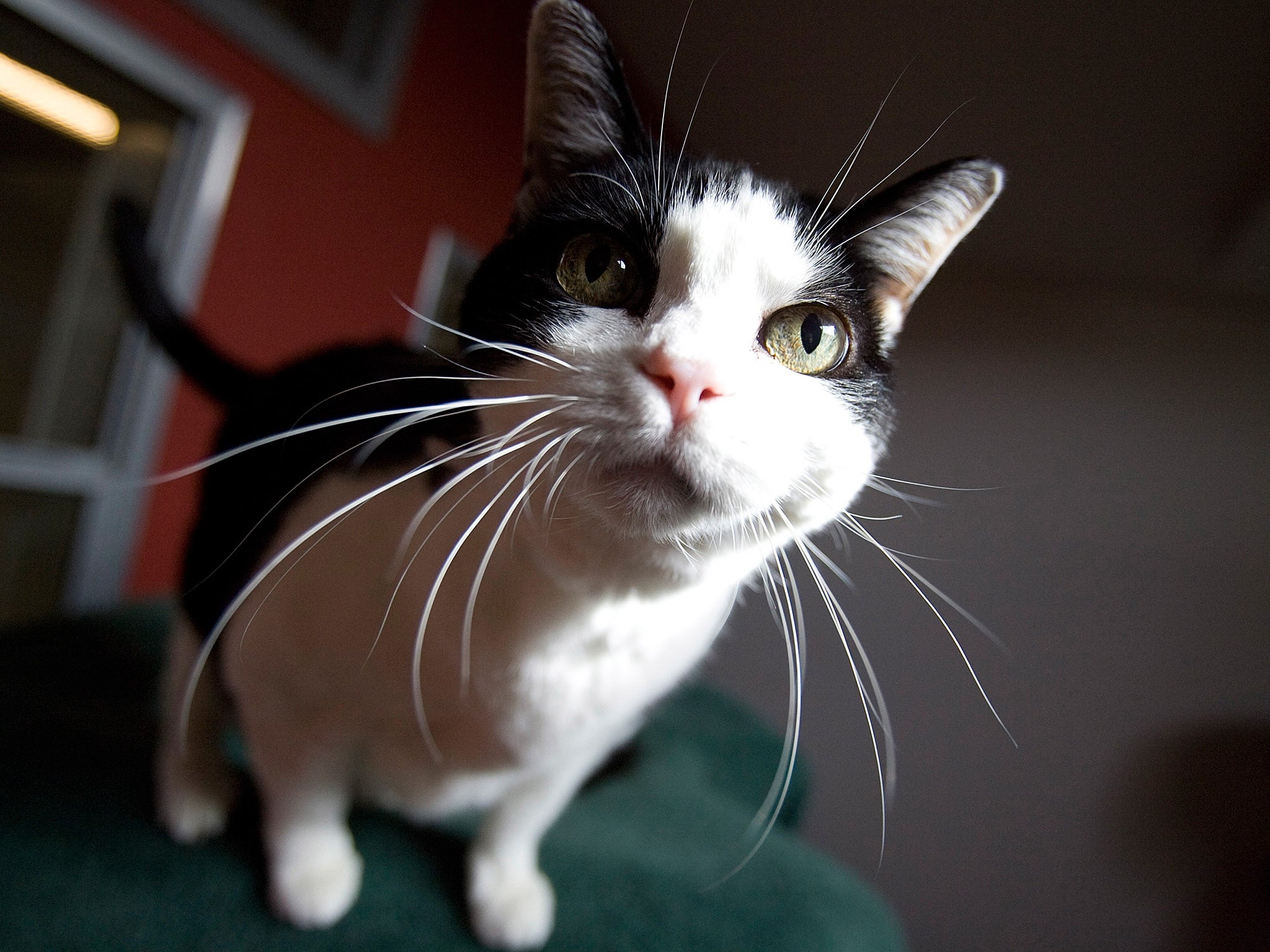From pogo-ing guinea pigs to 'hypnotised' rabbits, scientists discover the many mysteries of our pets
Bristol University has begun a study of why dogs chase their tails. And when they’ve got to the bottom of that...

From pogo-ing guinea pigs to mesmerised cats and over-amorous dogs, it seems our pets have a limitless capacity for bizarre behaviour.
As The Independent reported this week, Bristol University scientists are now trying to solve one of the more enduring mysteries: why do dogs chase their tails?
Having examined tail-chasers, the Bristol Spinning Dog Project is now calling for non-tail chasing dogs to be part of a control group. The dogs will be rewarded with snacks. The researchers hope to understand why dogs chase their tails, and to what extent it is playful or problematic.
But once they have solved that mystery, there are plenty more waiting to be explored or explained…
Pogo-ing guinea pigs
Owners call it popcorning. Suddenly the guinea pig springs up on all fours, seemingly as randomly as pieces of popcorn jumping in a pan.
For Dr Suzanne Held, a senior lecturer in animal behaviour at Bristol University, who is studying the phenomenon, nothing beats a popcorning guinea pig.
“Lambs skip. Pigs will jump up and twist their bodies. Rabbits ‘binky’: they jump on all fours and twist their bodies, but only after a run-up. Guinea pigs do it from a standing start.
“It’s totally marvellous. It just looks so daft, so silly.”
Dr Held suspects the popcorning guinea pigs, binkying rabbits and other leaping animals really are jumping for joy. She said: “Our working hypothesis is that animals are doing this as a kind of play, when they are feeling joyous. Guinea pig owners will tell you their pets start popcorning when they hear the rustle of a salad bag and know they are about to be fed.
“It’s perhaps a bit like kids skipping as they run to the playground.”
Cats stuck in circles

It has become an internet phenomenon. Hundreds of owners have shared images of their cat sitting in a circle marked by rope or tape, seemingly mesmerised and unable to move.
One theory is that the circle makes the cat feel secure, especially if it is formed by something rising above the ground like a piece of rope, offering an anxious moggy something to hide behind.
Dr Anne Seawright, of the Veterinary Behaviour Consultancy in Brent Knoll, Somerset, thinks it might have more to do with the cat’s renowned curiosity and under appreciated desire for human attention. She said: “I tried it on my three cats. Only one, Clarence, sat in the circle, and he left it as soon as I stopped paying attention to him.
“My hypothesis is that it is more to do with cats’ natural curiosity. By putting the circle down, we are doing something new, prompting them to investigate.
“If you then pay the cat attention, perhaps laughing or taking pictures, that will be seen as rewarding them for being in that spot – even though, because cats aren’t able to focus very well on close up objects, they wouldn’t necessarily notice that a circle marked in tape is there.”
She added: “The majority of pet cats very much value human attention. It’s just that, because they are not a naturally social species, they show it in different ways to dogs.
“They like to be in control, initiating the reaction – which is why cats tend to like people who don’t like cats. They often prefer the humans who don’t approach them, allowing the cat to choose its moment to come over.”
‘Hypnotised’ rabbits
Dr McBride, the author of Why Does My Rabbit…?, said: “It is playing dead in a last ditch attempt at survival.
“Darwin called it ‘the death faint’. Now we call it tonic immobility.
“The rabbit plays dead because when a predator thinks it has killed, it will briefly move away from its prey for a whole host of reasons, like washing its face. That gives the rabbit a split second to run for it before the predator returns.
“Its muscles will be floppy, but floppy does not mean relaxed. As a way of making your rabbit love you, inducing tonic immobility is not going to work.”
Dr McBride said tonic immobility was different from a rabbit freezing in the headlights of a car.
“A rabbit in the headlights is blinded and startled so it just freezes, with stiff muscles.
“And when a predator like a stoat dances around it, changing direction the whole time, a rabbit isn’t hypnotised either. It just stays still because it doesn’t know which way to move to escape.”
Dogs ‘getting amorous’ with your trouser leg
“Neutered dogs, entire males and females are equally likely to indulge in this kind of non-sexually motivated activity. There is no single explanation for it.”
In some cases it is possibly linked to anxiety, and in others to play. A study of dogs in parks, led by Carolyn Walsh of the Memorial University of Newfoundland, found that those doing the most mounting of other dogs were also doing the most playing.
Dr Walsh told thebark.com website: “There can be such a build-up of social motivation that some energy spills over into the sexual motivation system. You see sexual behaviour, but it’s mostly out of context.”
Goldfish that know their Bach from their Stravinsky
In 2013, researchers at Keio University in Tokyo found that goldfish could be trained to respond to a certain piece of classical music, remembering to bite on a bead in their tank to be rewarded with food when the piece was played.
Some were played Bach’s “Toccata and Fugue in D Minor”. Others got Stravinsky’s “Rite of Spring”.
The researchers found that 75 per cent of the time, the goldfish responded to their tune, but ignored the other one, suggesting they could tell the difference between Bach and Stravinsky.
“Fish,” said Darren Croft, associate professor of animal behaviour at the University of Exeter, “are far more intelligent than you might think”.
Goldfish have shown they are clever enough to navigate mazes, and to remember that pushing a certain lever at a particular time will produce a food treat.
In fact, Professor Croft thought it might be a good idea to give young goldfish plenty of stimulation, just as you would a human child – perhaps by moving objects around their tank or introducing new ones.
He said: “Studies of salmon have shown that fish that grow up in an enriched environment have better cognitive skills, better life skills when it comes to things like foraging for food.”
Join our commenting forum
Join thought-provoking conversations, follow other Independent readers and see their replies
Comments